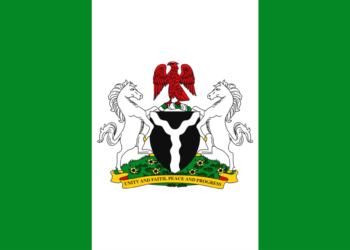In a high-stakes diplomatic effort to cool tensions that have roiled global markets, senior U.S. and Chinese officials gathered in Geneva today for talks aimed at easing the intensifying trade war between the world’s two largest economies.
The meeting, led by U.S. Treasury Secretary Scott Bessent and U.S. Trade Representative Jamieson Greer on the American side and Chinese Vice Premier He Lifeng for Beijing, marks the first significant face-to-face engagement since President Donald Trump imposed punishing 145% tariffs on Chinese imports in April, prompting China’s retaliatory 125% duties on U.S. goods.
The talks, shrouded in secrecy and heavy security, began early Saturday at an undisclosed location in Geneva, with police convoys escorting delegates through the city.
The choice of Switzerland, a neutral venue and home to the World Trade Organization (WTO), underscores the global stakes, as the trade dispute threatens to disrupt supply chains, inflate consumer prices, and tip economies into recession.
WTO Director-General Ngozi Okonjo-Iweala hailed the dialogue as a “positive and constructive step toward de-escalation,” urging sustained engagement to stabilize global commerce.
The backdrop to these negotiations is a tit-for-tat escalation that has brought U.S.-China trade to the brink of collapse. Since Trump’s return to the White House in January, his administration has leaned heavily on tariffs as a tool to address what it calls China’s “unfair trade practices,” including subsidies for high-tech industries and alleged inaction on fentanyl precursor exports.
The 145% U.S. tariffs, described by Bessent as akin to a “trade embargo,” have slashed Chinese exports to the U.S. by 21% in April alone, while China’s 125% retaliatory tariffs have hit American agricultural and industrial exporters hard.
The economic fallout is palpable. In the U.S., the first quarterly economic contraction since 2022 has been partly attributed to tariff-driven import disruptions, with West Coast ports reporting sharp declines in Chinese shipments.
American consumers are feeling the pinch, with Goldman Sachs projecting inflation could double to 4% by year’s end due to higher import costs. Meanwhile, China’s manufacturing sector, a cornerstone of its economy, contracted at its fastest pace in 16 months in April, prompting Beijing to roll out monetary stimulus, including interest rate cuts and reduced bank reserve requirements, to cushion the blow.
Expectations for a breakthrough remain tempered. Both sides have publicly downplayed the prospect of a comprehensive deal, with Bessent emphasizing “de-escalation” over a “big trade deal.” In a Fox News interview earlier this week, he called the current tariff levels unsustainable, signaling a willingness to explore reductions.
President Trump, in a Truth Social post on Friday, floated an 80% tariff rate as a potential compromise, though analysts question whether it would satisfy Beijing.
China, for its part, has maintained a firm stance. Foreign Ministry spokesperson Lin Jian reiterated that dialogue must be based on “equality, respect, and mutual benefit,” while the Commerce Ministry insisted that the U.S. must “rectify its wrongdoing” by lifting unilateral tariffs.
WHAT YOU SHOULD KNOW
While a full resolution remains elusive, the fact that both nations are at the table is a rare bright spot after months of economic brinkmanship.
ALSO READ TOP STORIES FROM VERILY NEWS


















